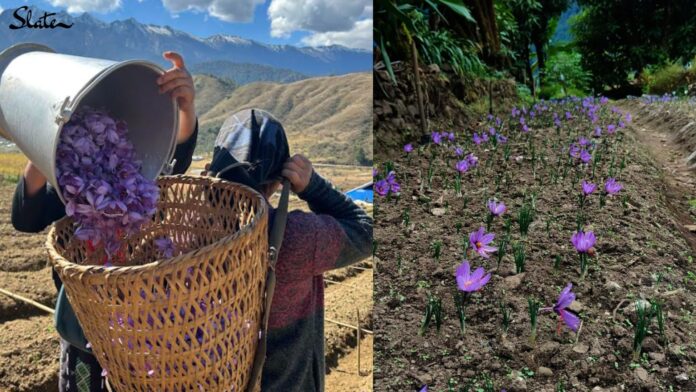By Dr Sunita Upadhaya
Saffron, the oldest and the costliest spice in the world is known for its organoleptic properties. Often referred to as ‘red gold’ the thread-like dried stigmas of the Crocus flower are the storehouse of several bioactive compounds including crocetin, crocin, picrocrocin, kaempferol and saffranal making it a potential functional food. It has wide-ranging therapeutic properties including anti-cancer, anti-diabetic, anti-depressant, anti-seizure, anti-inflammatory, and hypolipidemic. Known for its unique flavour, aroma, and colour, saffron is a popular ingredient in various food and beverage products.
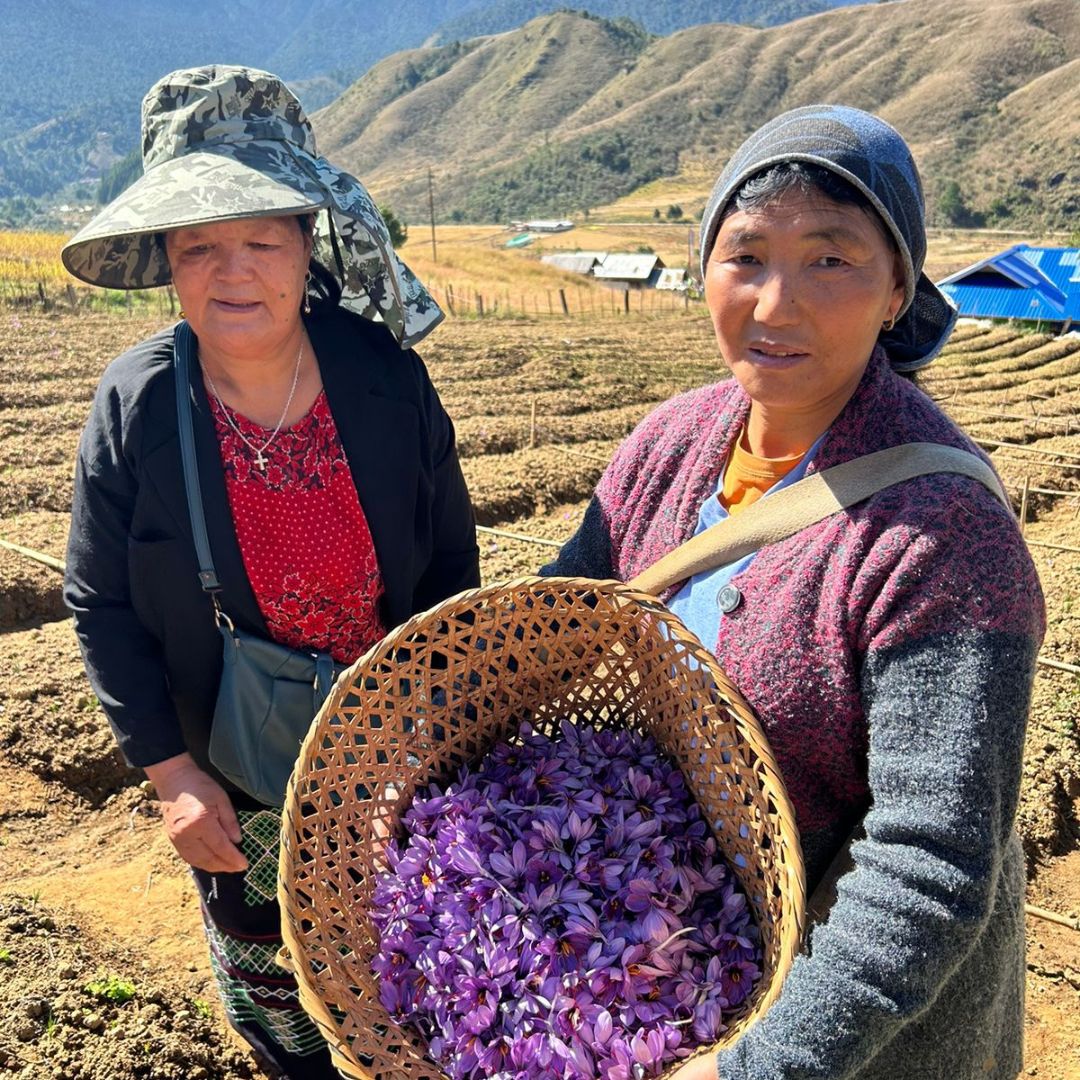
The fact that Covid-19 pandemic has changed the agri-business landscape, which is now driven by rising demands for superfoods, there is ever ever-increasing demand for saffron in both national and global markets. Moreover, the saffron market is seeing an increase in the cosmetics industry, owing to the growing interest of consumers in natural and organic beauty products. It is also one of the popular ingredients in skincare products due to its antioxidant and anti-inflammatory properties.
Saffron’s unique aroma and colouring properties make it a desirable addition to fragrances and colour cosmetics. As more consumers seek out natural and plant-based ingredients in their personal care products, the demand for saffron in the cosmetics industry is expected to continue to grow. Commercial saffron is sold at Rs 3.5 lakh per kg; the global saffron market was valued at USD 589.23 million in 2022 which is expected to grow at a compound annual growth rate (CAGR) of 6.4 per cent between 2022 to 2030. Although the market is expanding each year, the past years have witnessed a decrease in the production of saffron.
The annual demand for saffron in India alone is 100 MT, but production is nearly 12-15 MT (2020-2021). The union territory of Kashmir is the only saffron-growing region in India. There is a dire need to fill the gap of demand and supply of saffron both at domestic and international markets and efforts are being made to explore alternate strategies to scale up saffron production.
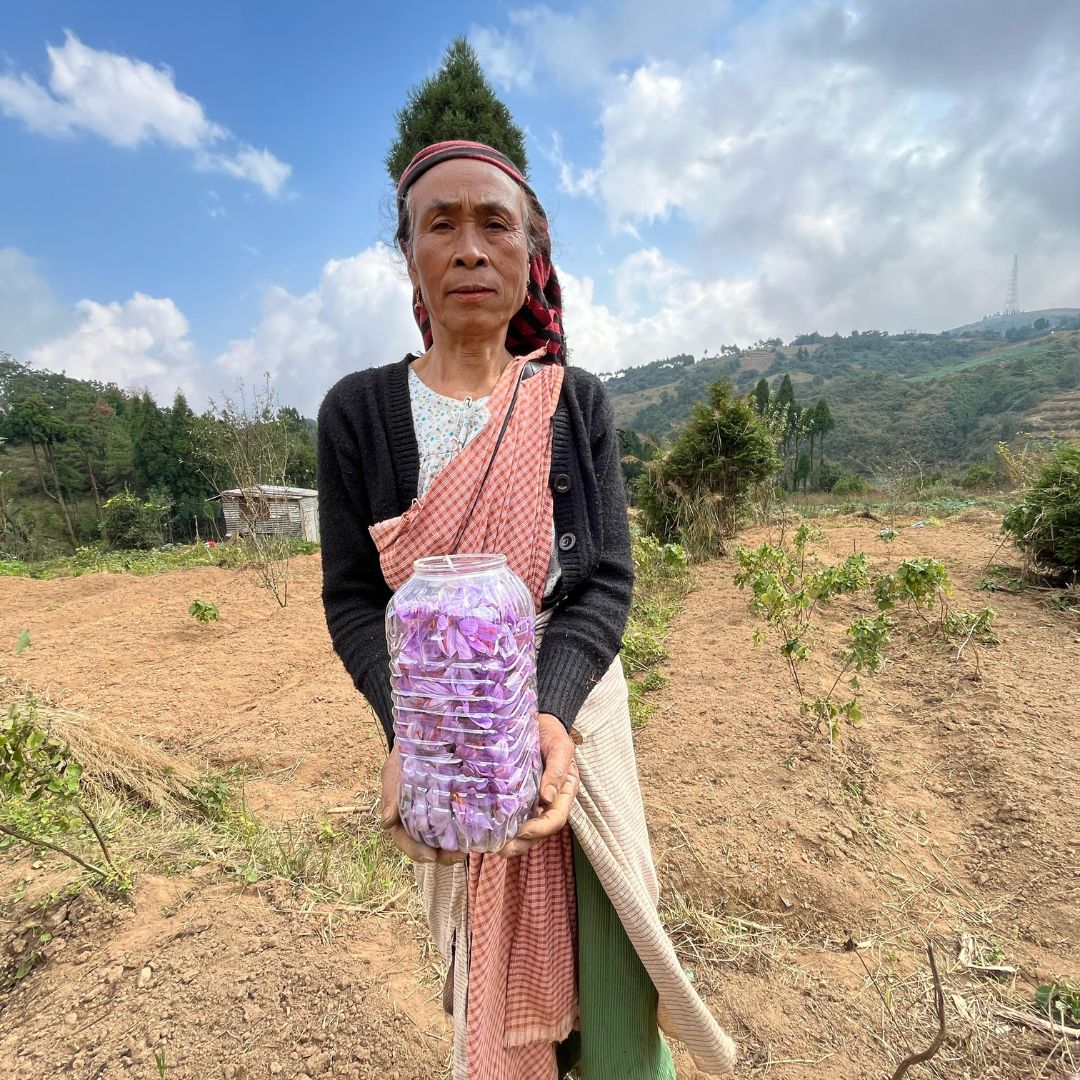
As one of the biodiversity hotspots, the Northeastern region of India has been the geographical ‘gateway’ for much of India’s flora and fauna and houses many endemic floras as well as faunas. The diverse topography and geography have also favoured the acclimatisation of many exotic floras. The rich geographical diversity of North East and the opportunity and need to increase the productivity of saffron is bridging the gap between the far North and North East through an initiative by the Northeast Centre for Technology Application and Reach (NECTAR), an autonomous organisation under the Department of Science and Technology, Government of India.
NECTAR launched Mission Saffron 2021-2022 as a pilot project to assess the suitability of NER in Arunachal Pradesh, Meghalaya, Mizoram, and Sikkim in collaboration with Arunachal State Rural Livelihood Mission and Directorate of Horticulture, Govt. of Arunachal Pradesh; Bethany Society, Krishi Vigyan Kendra, Meghalaya Basin Development Authority and Directorate of Horticulture, Govt. of Meghalaya; MISTIC, Mizoram; Sikkim state council of Science and Technology, Social Forestry, Govt. of Sikkim. Cultivation sites were identified after a detailed survey of parameters like altitude, soil, rainfall etc was carried out following remote sensing and GIS technologies using standard reference from Kashmir.
Complete assessment related to soil analyses, flowering yield, corm survival rate and multiplication was carried out by NECTAR in respective sites. Positive outcomes from pilot cultivation paved the way to carry forward the project on a larger scale for the year 2023-2024. Currently, large-scale cultivation is ongoing in two locations which are Menchukha in Arunachal Pradesh and Yuksom in Sikkim. Cultivation steps were modified by the NECTAR team as per the prevailing climatic conditions and soil type of different cultivation sites.
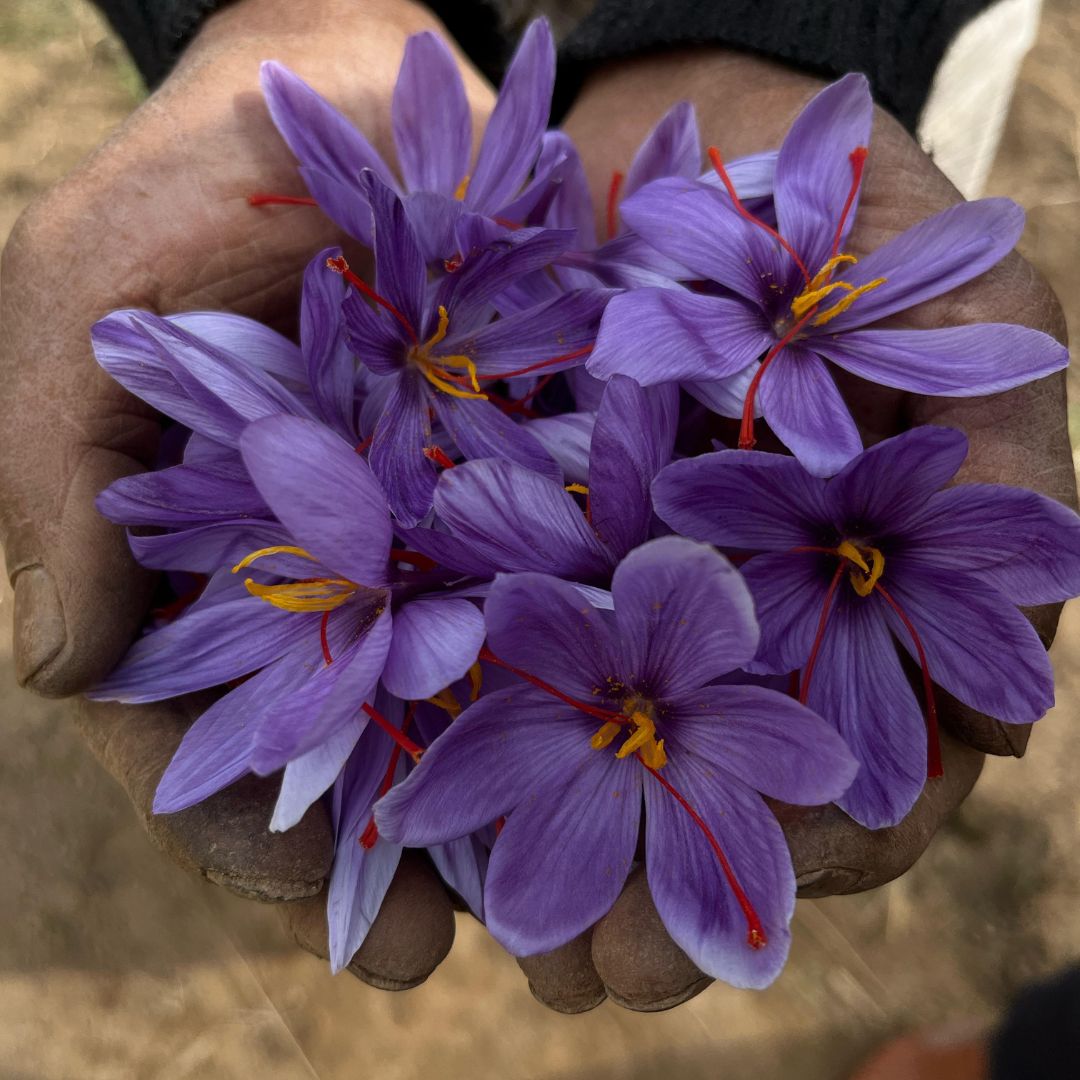
Many farmers are anticipated to reap the benefit of Mission Saffron through the various agencies associated with NECTAR in Sikkim, Arunachal Pradesh, Meghalaya and Mizoram.
In Meghalaya, a few locations have shown potential in East as well as West Khasi hill districts. Currently, Krishi Vigyan Kendra and Experimental Research Station in Upper Shillong, Bethany Society in Umpling, Wellsprings Social Service Society in Mairang, and 5 individual farmers from Laitkor, Nongshillong, Jongsha, Nongkrem and Thangshning are engaged in saffron cultivation through NECTAR. The farmers are enthusiastic and positive that saffron cultivation could provide them with an opportunity for economic development and reduce their reliance on local seasonal crops like potatoes, cabbages, and beans.
As of November, a large number of flowers were seen blooming in all the cultivation sites, and much more is expected in the next few days. As saffron flowers spread the purple hues and unique fragrance in the pristine hills of NER, a fairly good amount of dried saffron is expected from the region this season as a humble beginning which brings a ray of hope to the farmers for better days ahead. According to NECTAR officials, this could be an excellent platform for the marginal farmers of the NER to tap the lucrative global market of saffron as a potential cash crop.
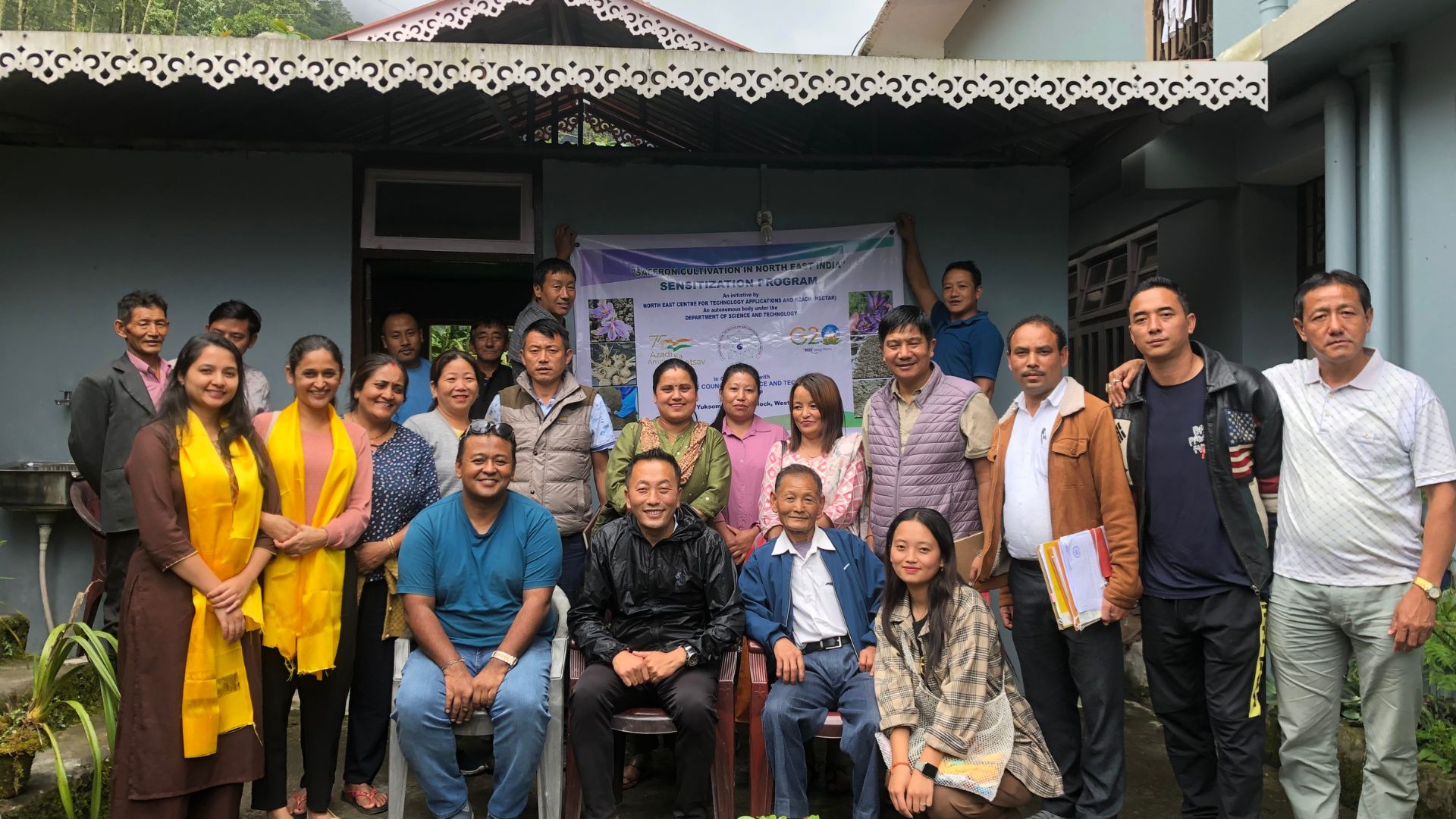
NECTAR envisions introducing NE organic saffron in the market by bringing more farmers, agripreneurs and young entrepreneurs under saffron cultivation. NECTAR is also exploring the possibility of delving into the realm of research and development for the valorization of saffron floral parts other than stigma. The project is led by Dr Arun Sarma, Director General, NECTAR followed by NECTAR officials Dr Colin Z Renthlei, Rakesh K Sharma, and Mariadon Pathaw, and monitored and evaluated by Dr. Lily Shylla, Baiamonlangki Sutgna, Gabriella Mary Kharrubon and this writer.
(The writer is Project Associate, North East Centre for Technology Application and Reach)


